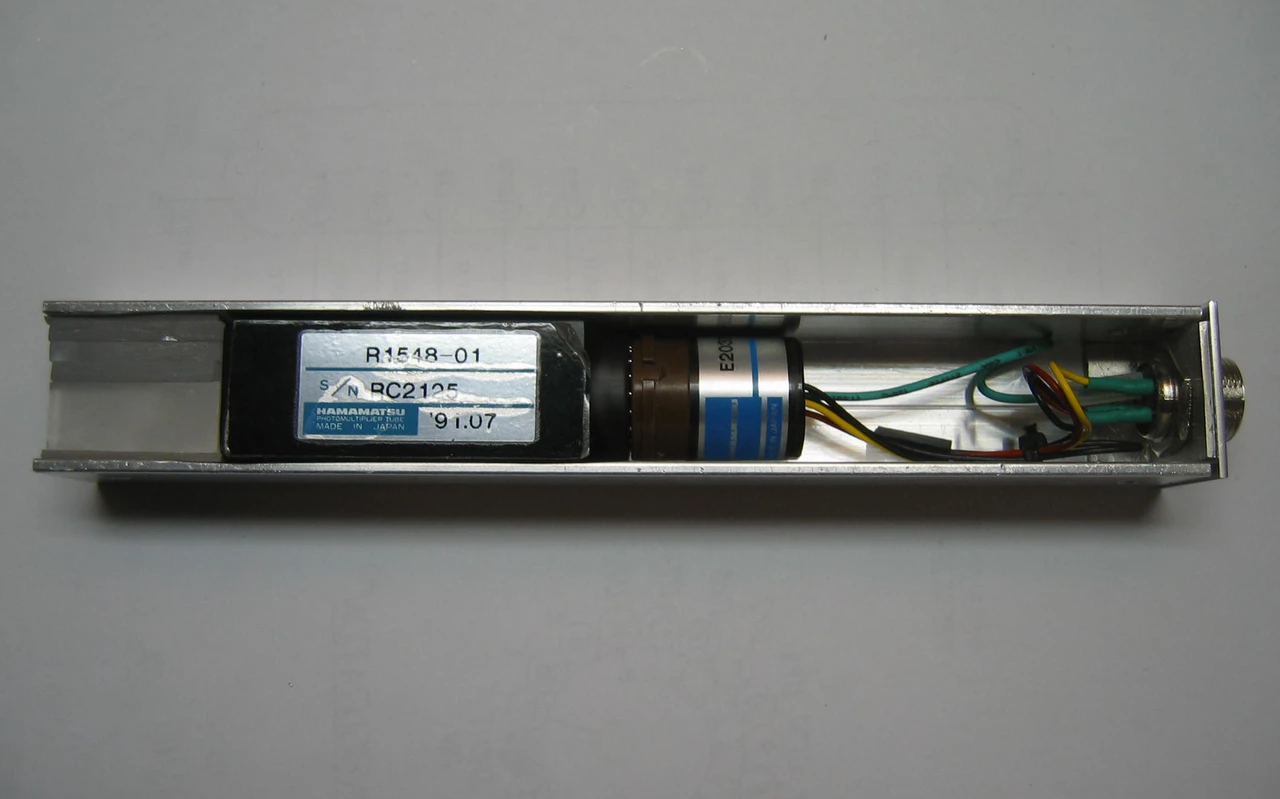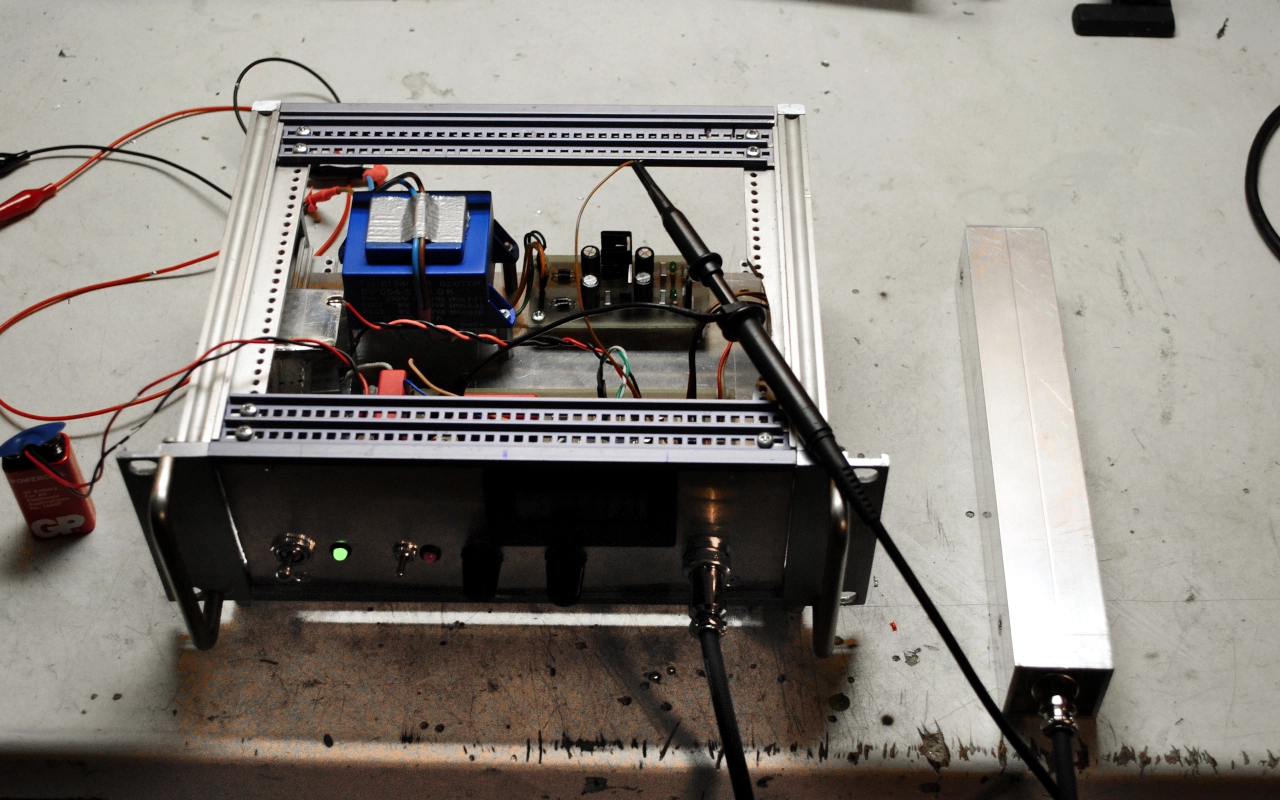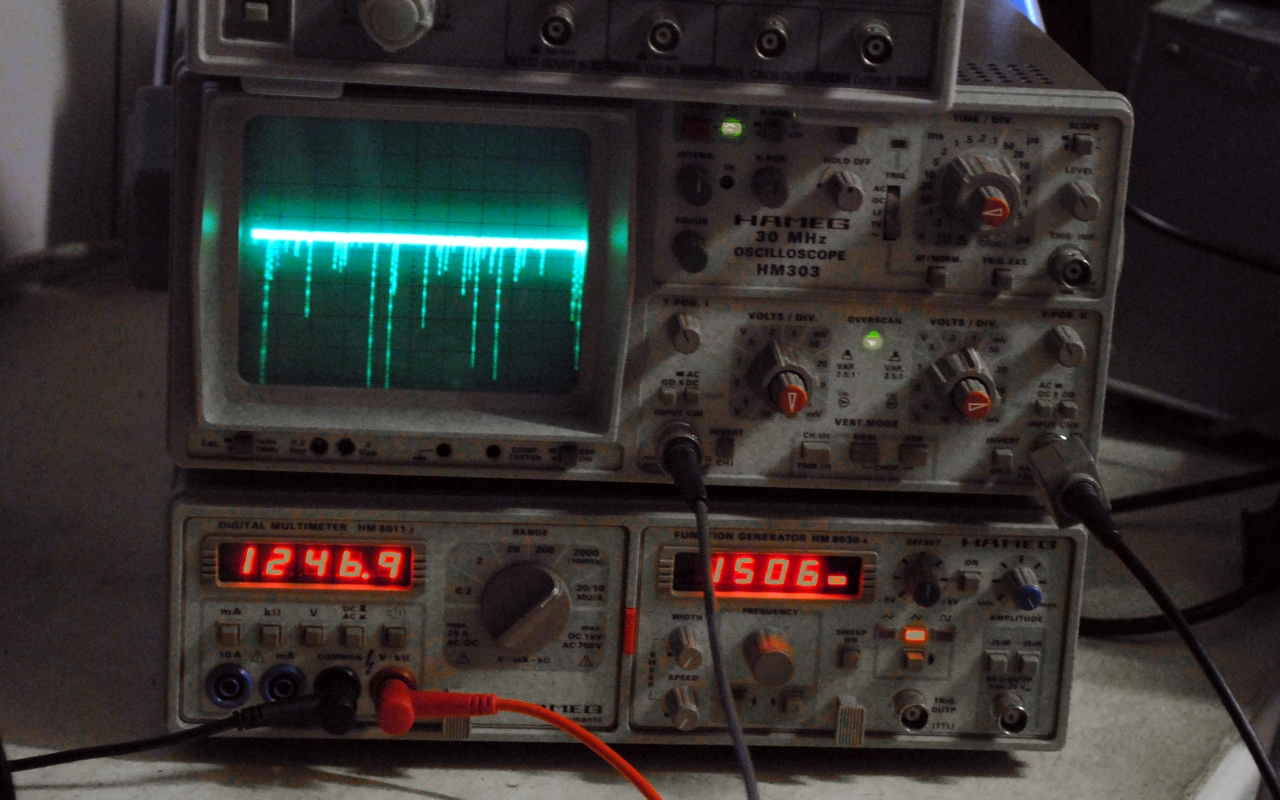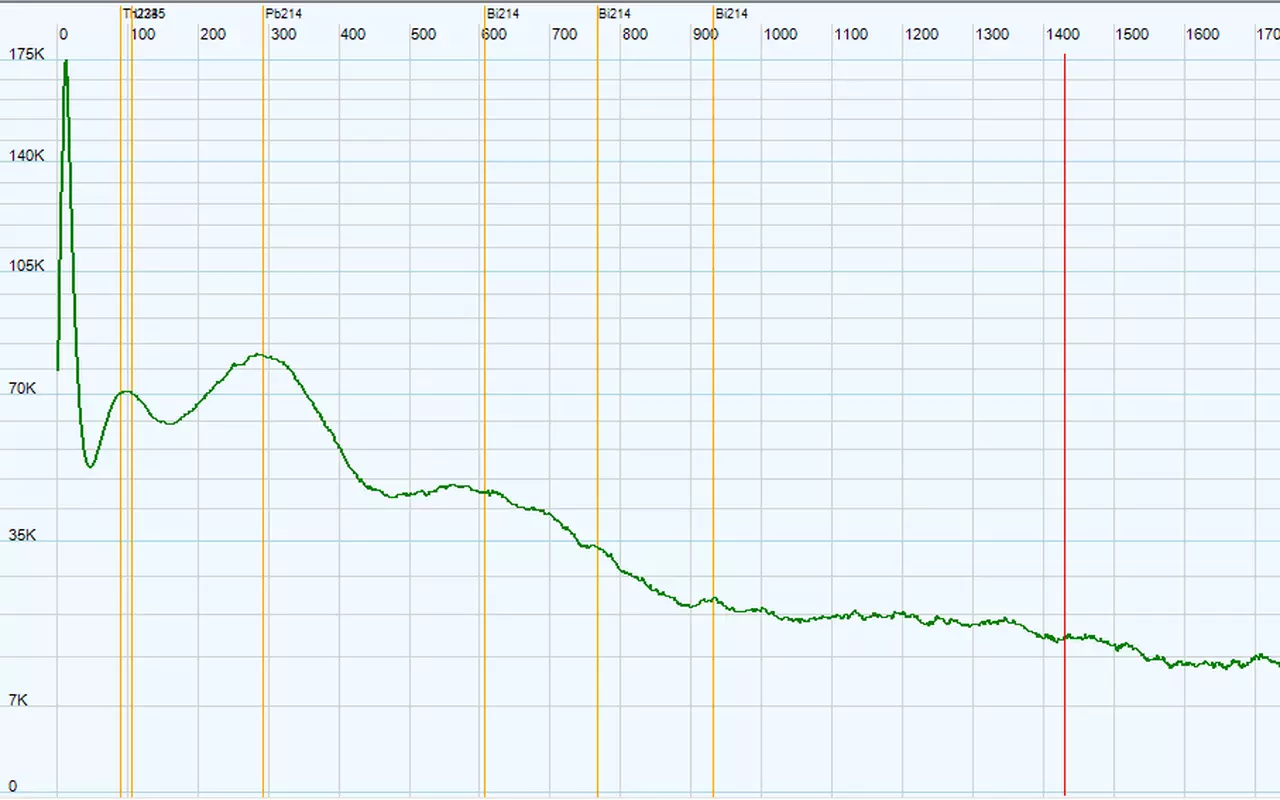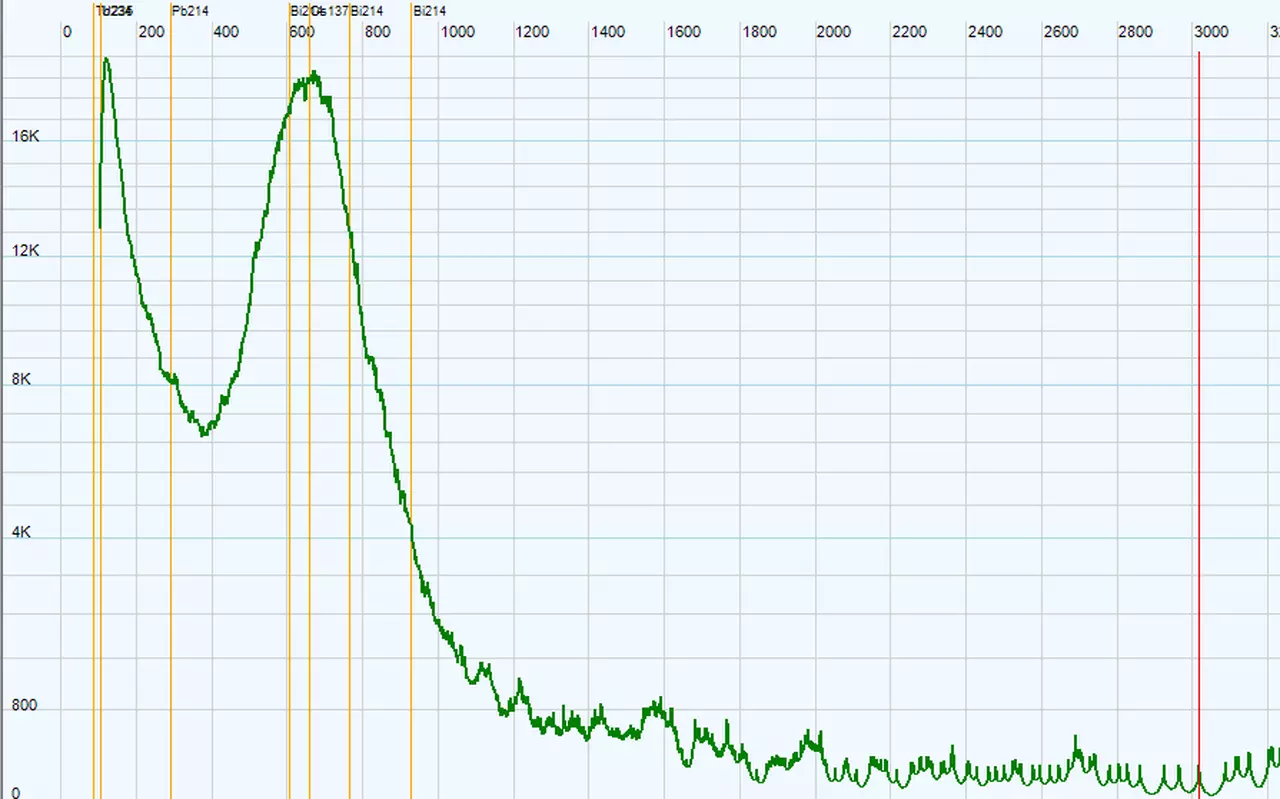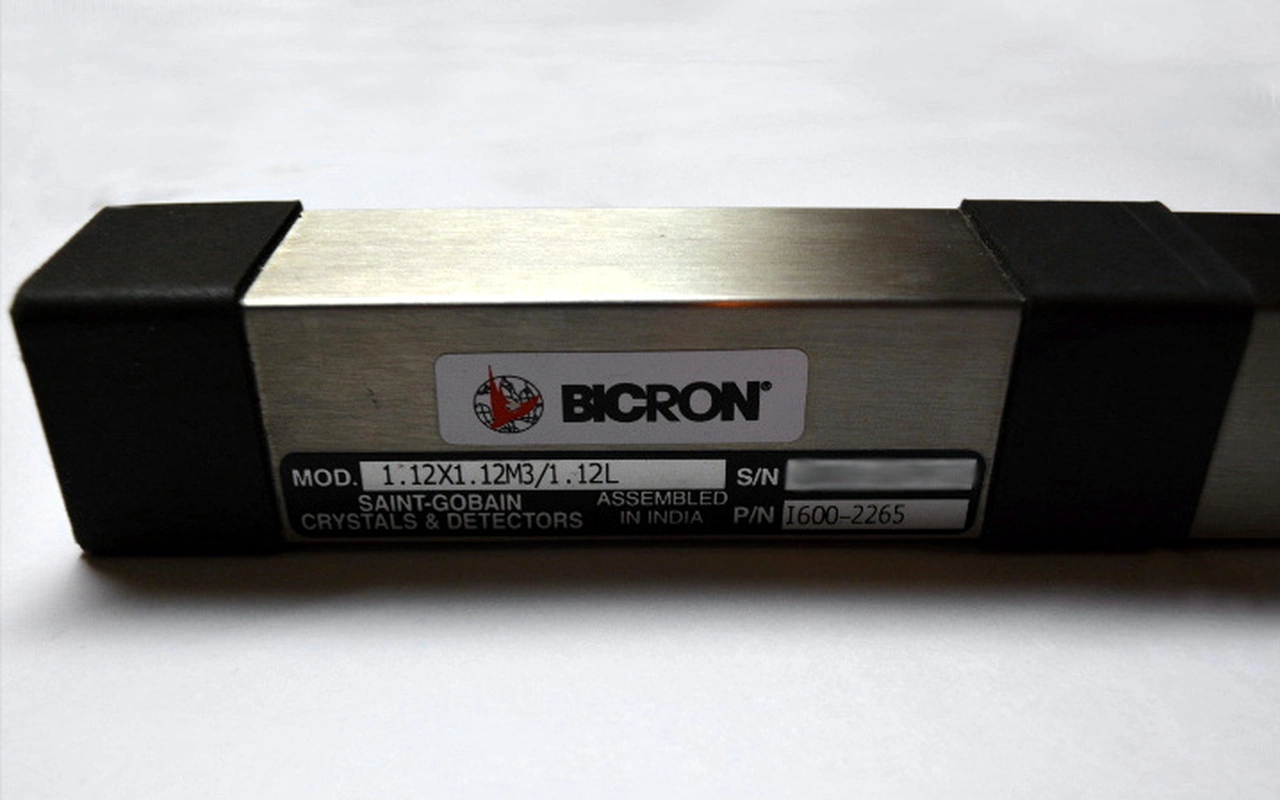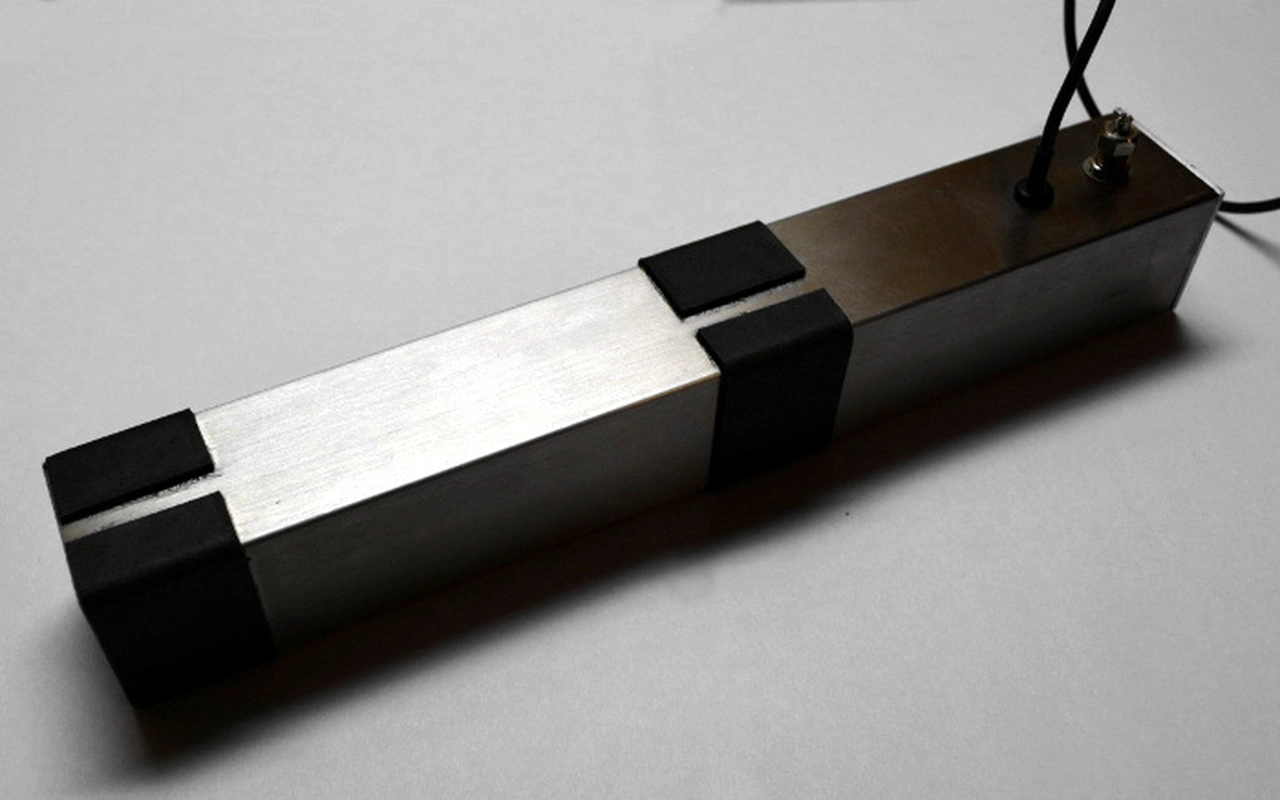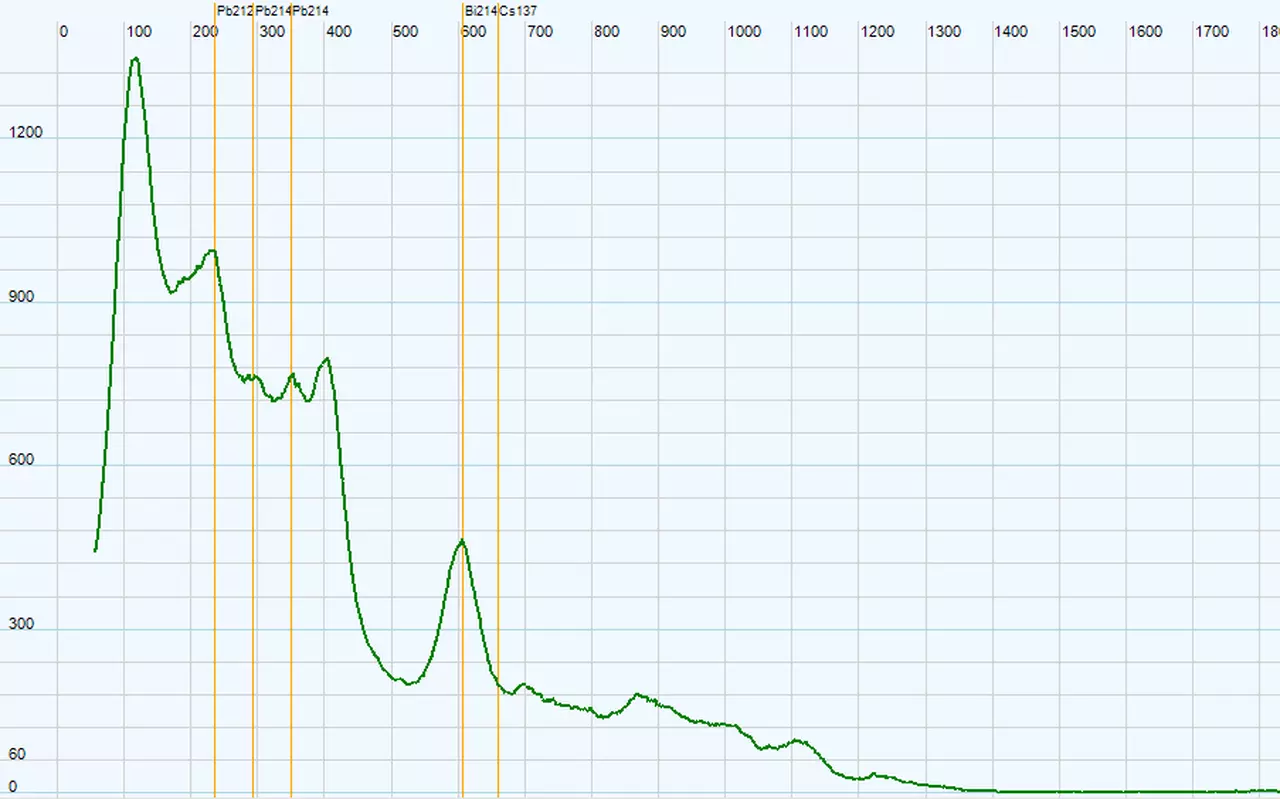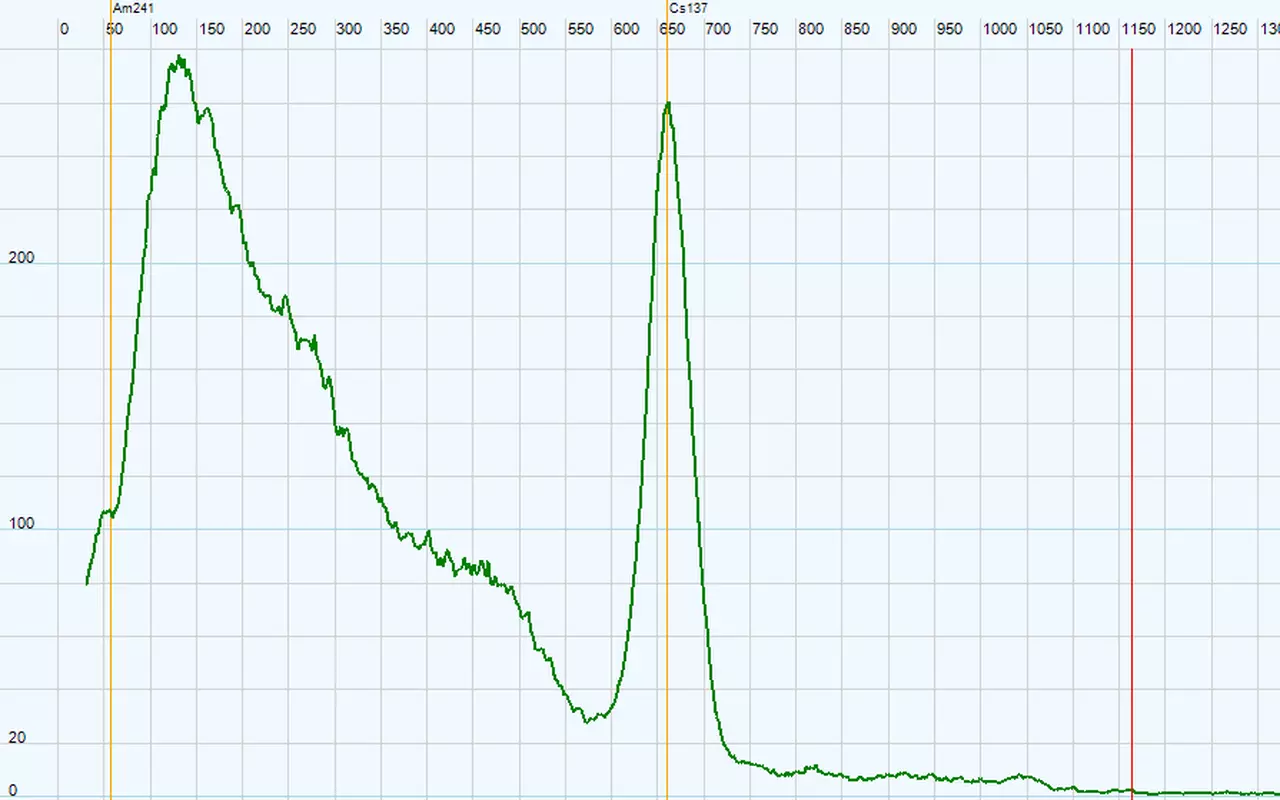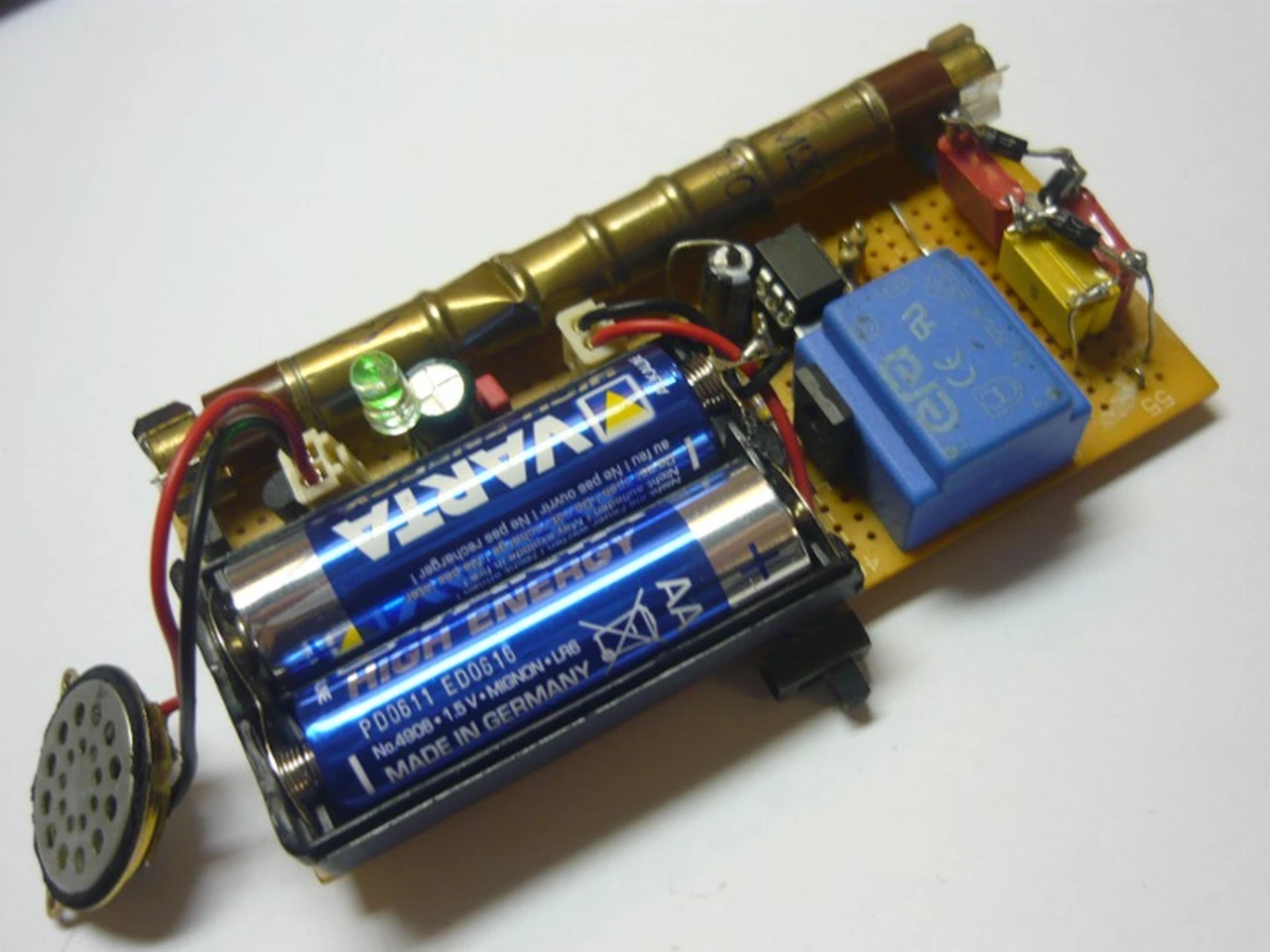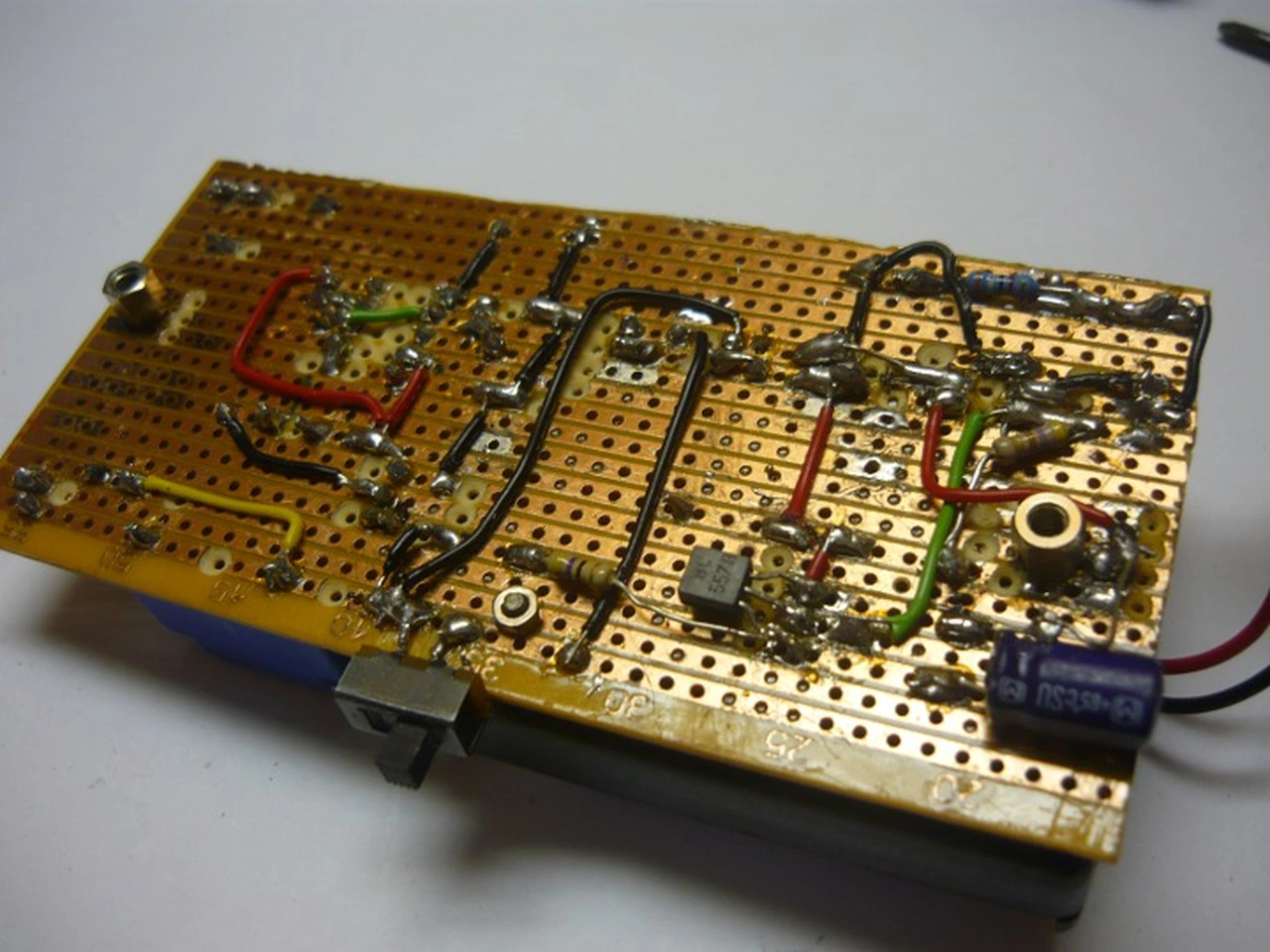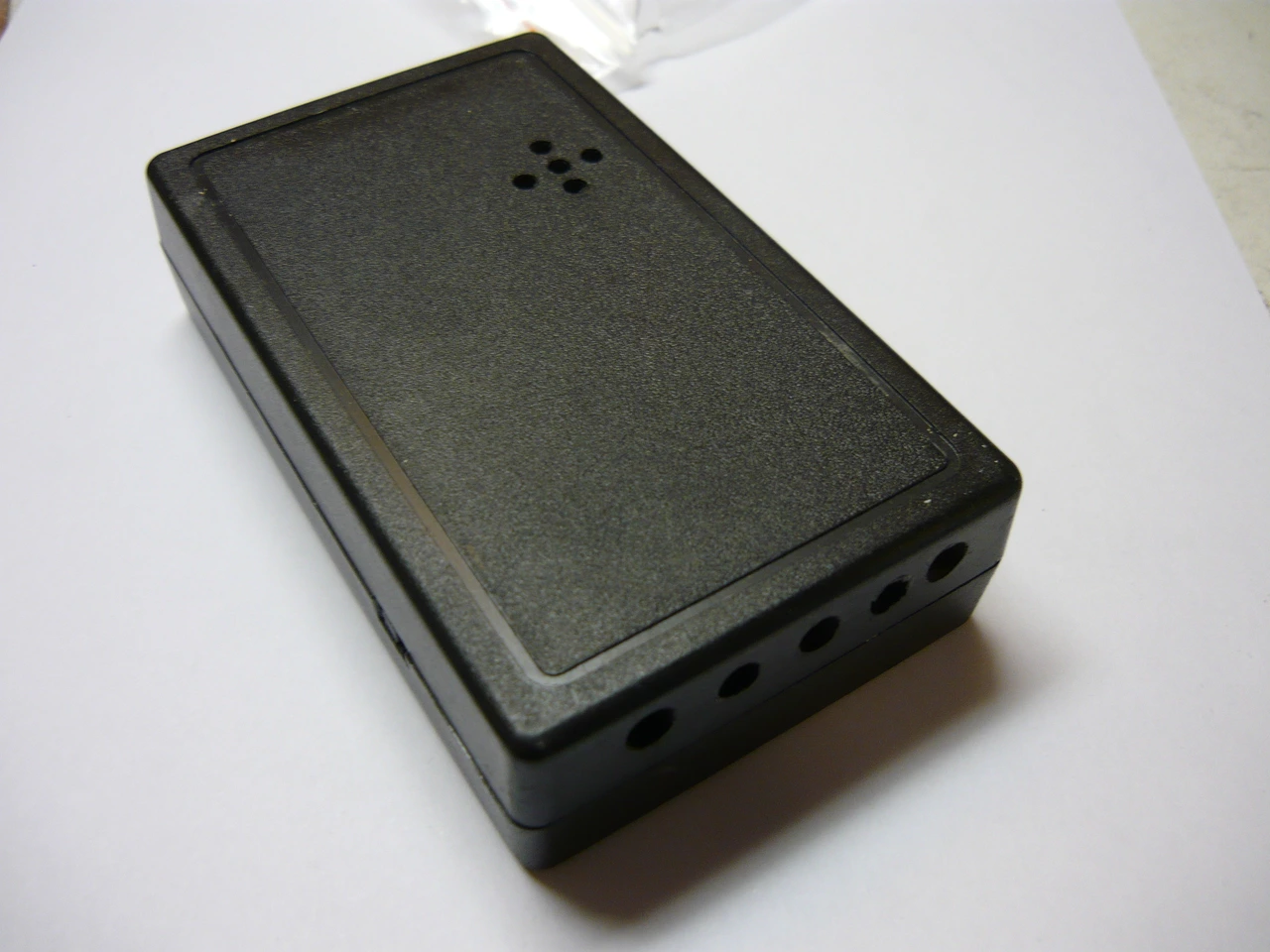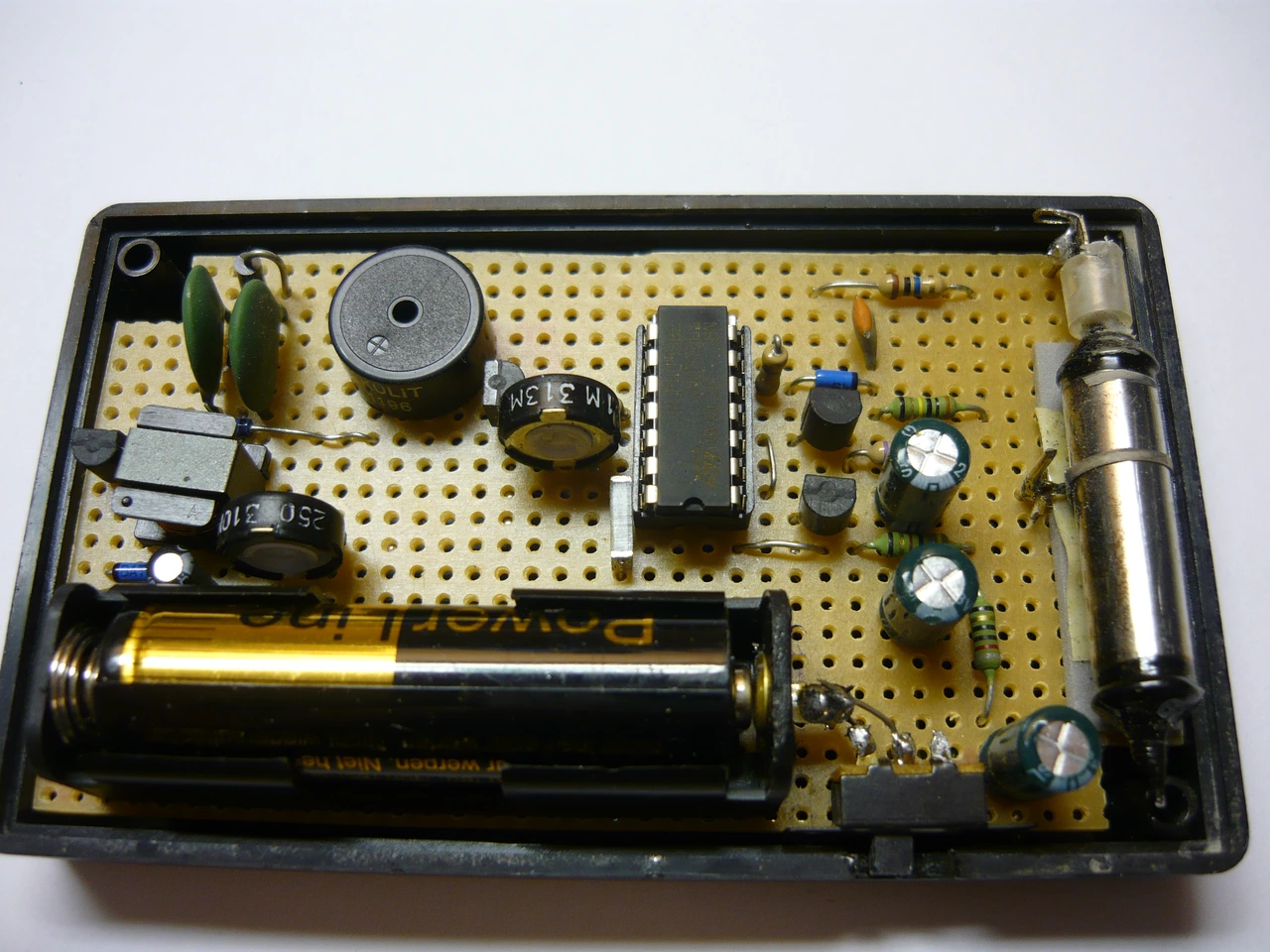Radiation Detectors
I have built various radiation detectors over the years. I also find the variety of existing products fascinating and like to collect various devices.Gamma Spectroscopy
Gamma spectroscopy allows isotope identification by looking at the specific energy released by a decay event. A low cost and easy way to quantify decay energy is by use of a scintillation detector. Atoms in the scintillation material are excited by absorption of radiation events. When transitioning from the excited state, scintillation photons are emitted. Because the number of photons generated during a scintillation event is dependent on particle energy, decay energy can be identified.
I built a scintillation detector from scratch using Bismuth Germanate crystals as scintillation material and a Hammamatsu RC2125 photomultiplier tube for photon detection. The crystals were positioned at the photo cathode and optically coupled to the tube. The tube and crystal were then mounted in an aluminium extrusion. The assembly was placed in an aluminium housing to block ambient light.
NaI:Tl scintillator
I found this scintillation probe online. It contains a sodium iodide scintillation crystal that has been doped with Thalium. A photomultiplier tube is used for photon detection. These probes are commonly used in large vehicle scanning setups. I designed a linear high voltage power supply from parts I extracted out of a fluorescent lamp inverter. A linear power supply, while not particularly efficient, is an easy choice as it does not introduce switching transients, greatly simplifying filter design.The sodium iodide scintillator provided much nicer energy resolution.
Geiger Counters
I have built multiple geiger counters when I was younger. In contrast to other types of detector, geiger tubes are affordable, easy to drive and almost indestructible. Once built, the geiger counter can then be used to go on treasure hunts for radioactive items in local antique shops, forests or mining tailings.
A Geiger-Muller Tube requires a high voltage supply (usually between 400V and 500V) to operate. The nescessary voltage can very easily be generated with minimalistic circuitry by making use of some geiger tube characteristics. If the supplied voltage lies within the Geiger-Muller tube's plateau region, sensitivity is not strongly affected by voltage changes. Additionally, the current required to run the tube is generally low when measuring moderate levels of radiation. I designed this geiger counter many years ago when I was in high school. It uses a simple NE555 monostable to drive a small mains transformer. The circuit solely relies on the transformers turns ratio to generate the high voltage. The output voltage was then increased using a cockroft Walton multiplier circuit.
I built another geiger counter based on a design I found on the internet. It utilizes a flyback circuit from a cheap camera to generate the high voltage for the geiger tube. The circuit runs on a single 1.5V battery. I added RC low pass filtering to reduce supply noise. Due to the photo flash circuit's rather nasty transient behaviour, power supply noise would otherwise be coupled into the current amplifier through the geiger tube's capacitance.
